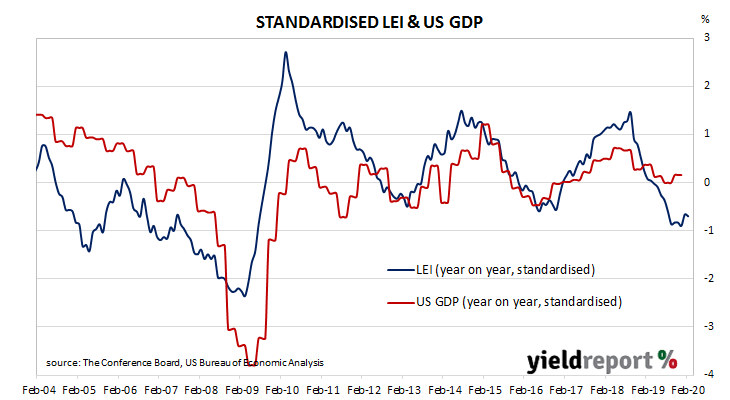The Conference Board Leading Economic Index (LEI) is a composite index which is composed of ten indices which are thought to be sensitive to changes in the US economy. The Conference Board describes it as an index which attempts to signal peaks and troughs, as turning points in the index have historically occurred prior to changes in aggregate economic activity. While the first two months of 2020 appeared to have represented a break from the downtrend of the second half of 2019, recent events have made the most recent figures obsolete.
The Leading Economic Index increased by just 0.1% during February, in line with expectations but quite a large decline from January’s +0.7% after revisions. On an annual basis, the LEI slowed from January’s revised growth rate of 0.9% to 0.8% in February.
The Conference Board’s Senior Director of Economic Research, Ataman Ozyildirim, said the latest reading “doesn’t reflect the impact of the COVID-19 pandemic which began to hit the US economy in full by early March.” He said “the economy may already be entering into a period of contraction.”
Changes over time can be large but once they are standardised, a clearer relationship with GDP emerges. The latest reading implies a year-on-year growth rate of 1.5% at the beginning of the September 2020 quarter.


